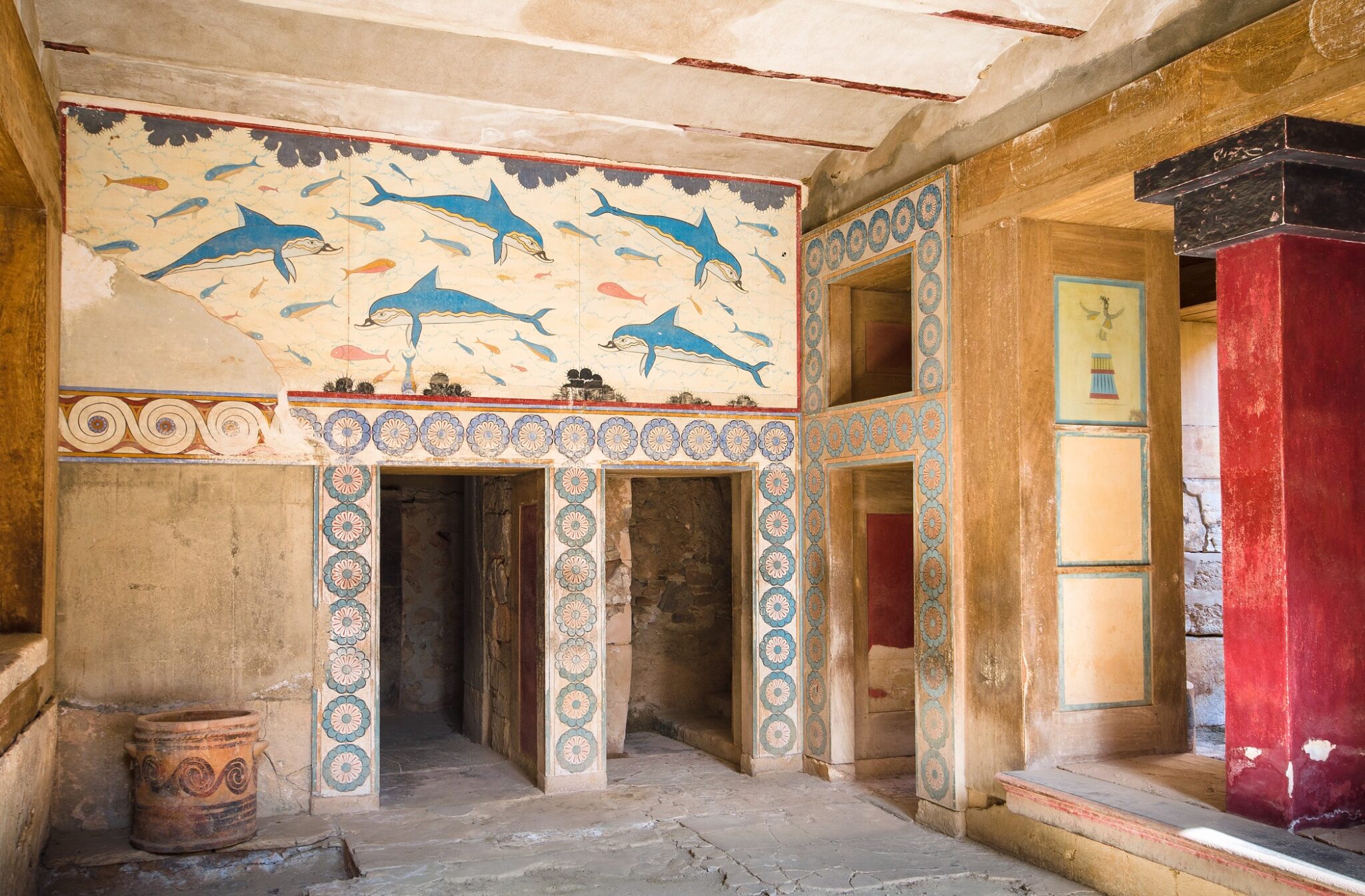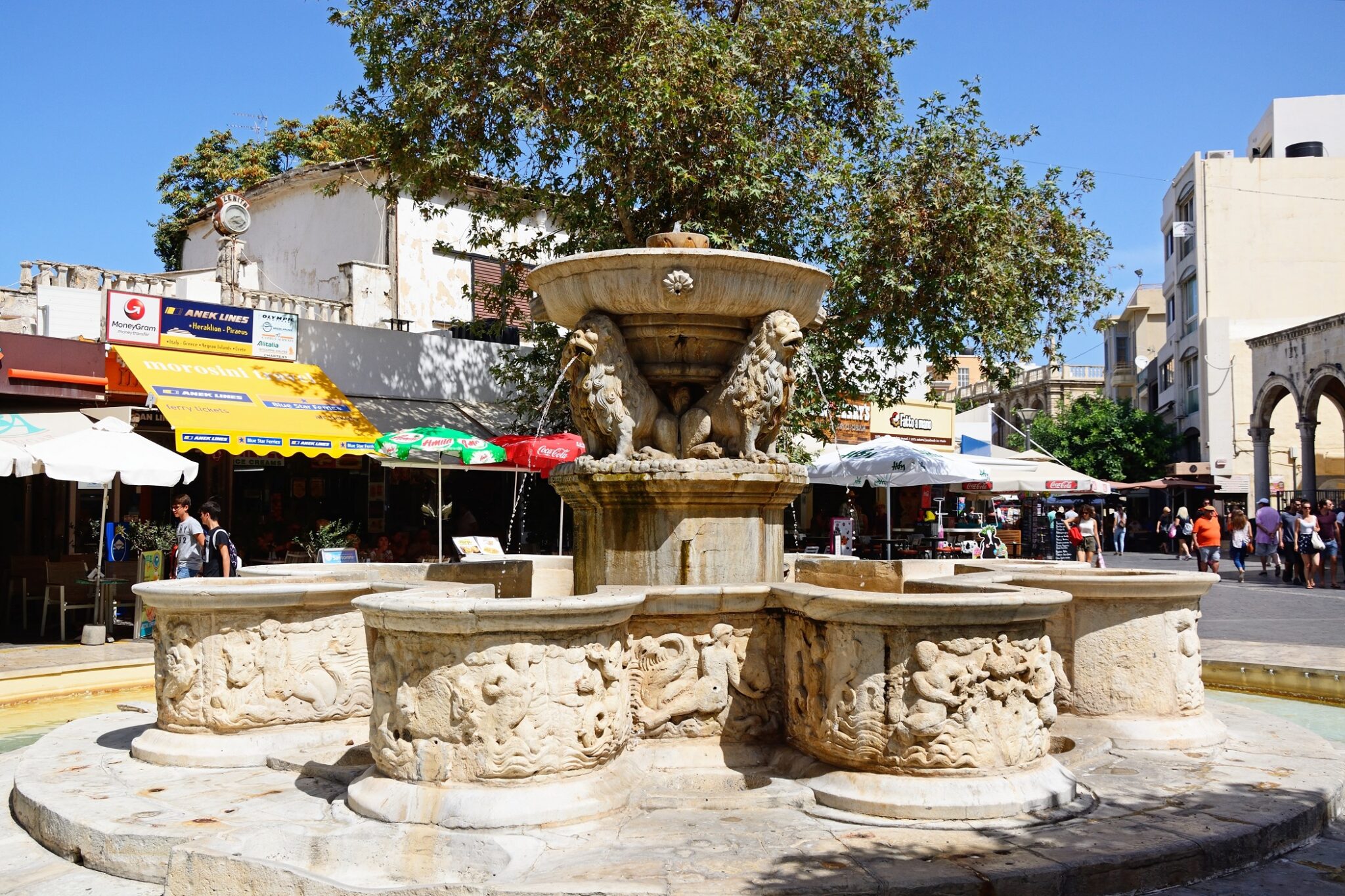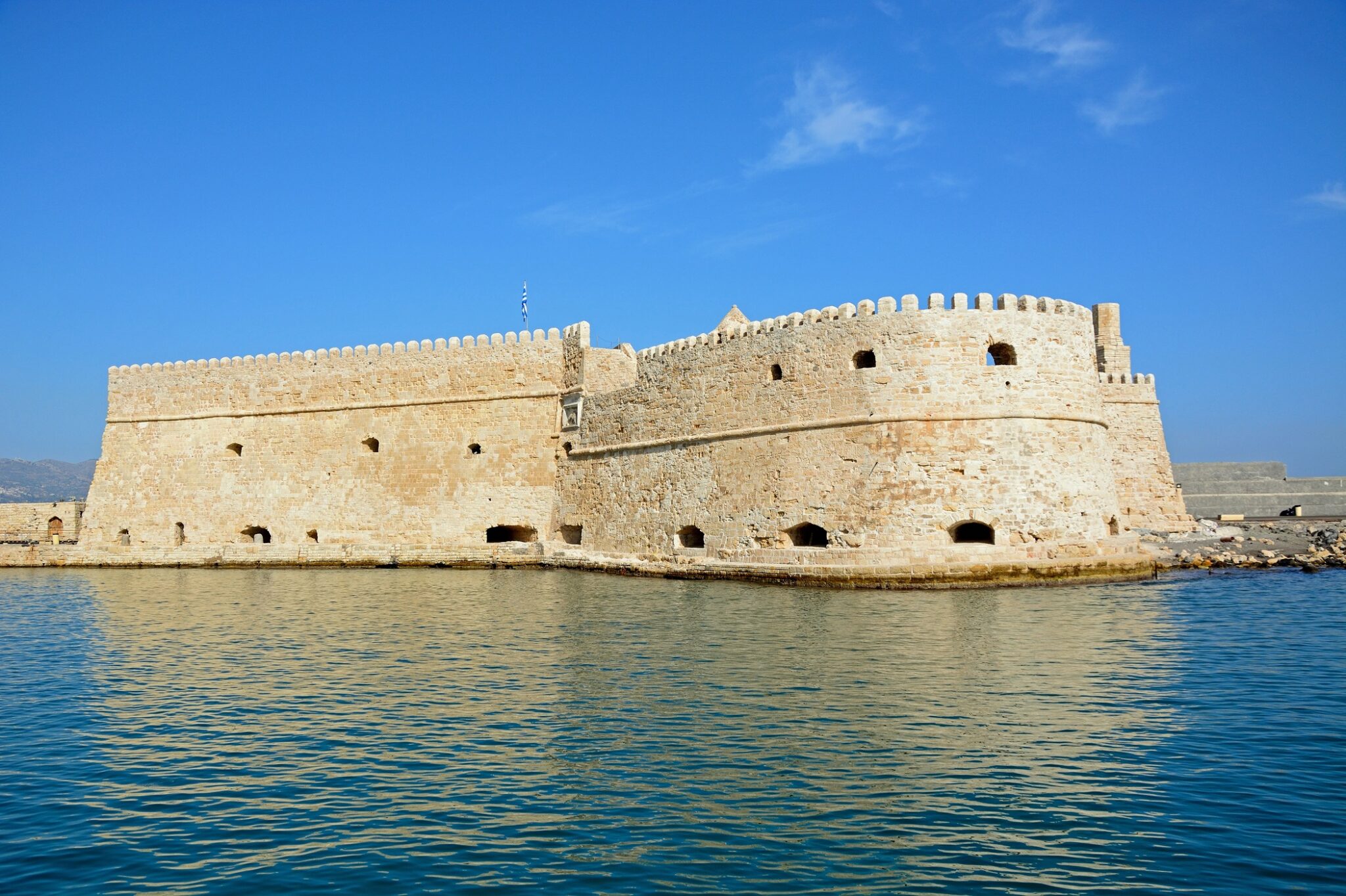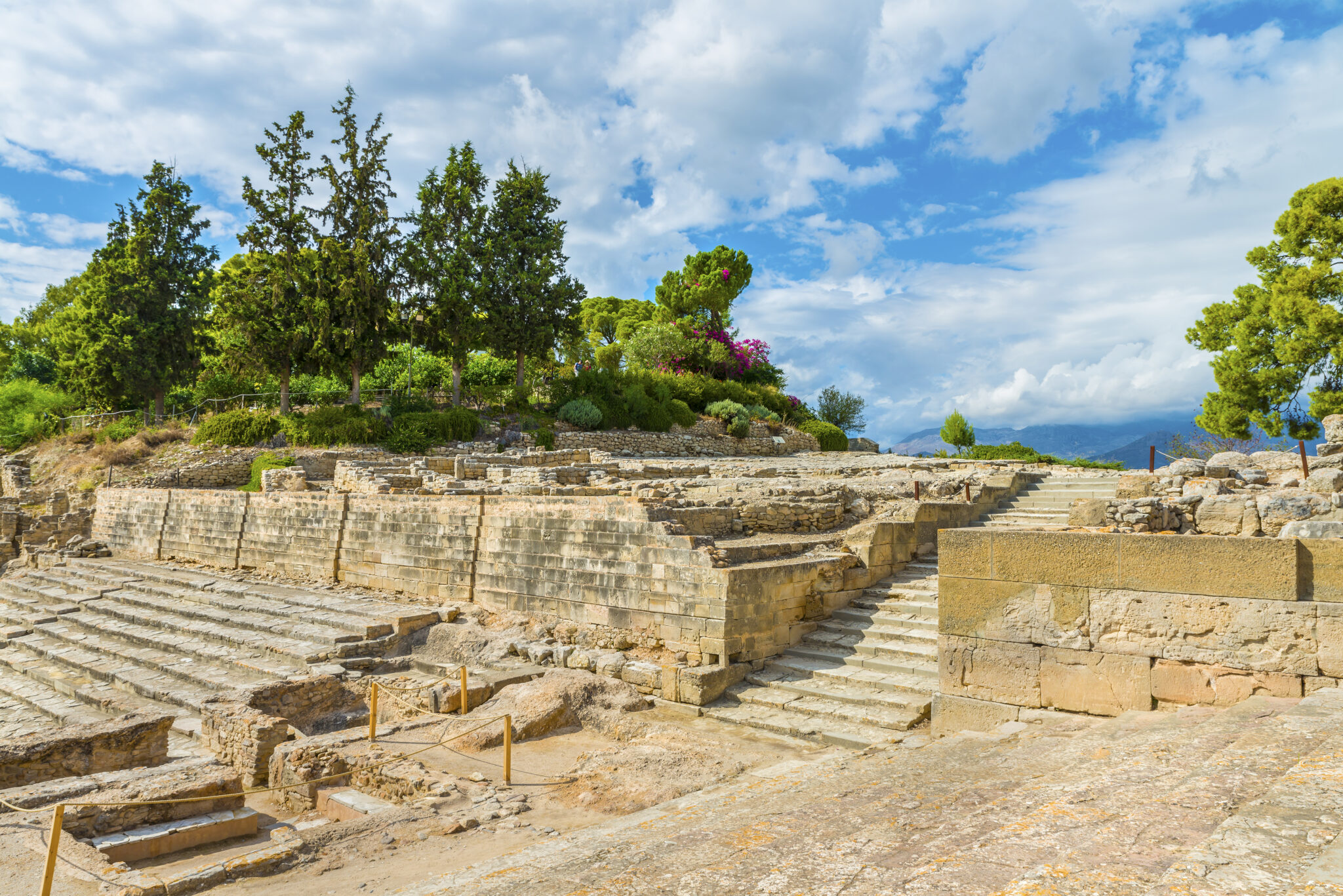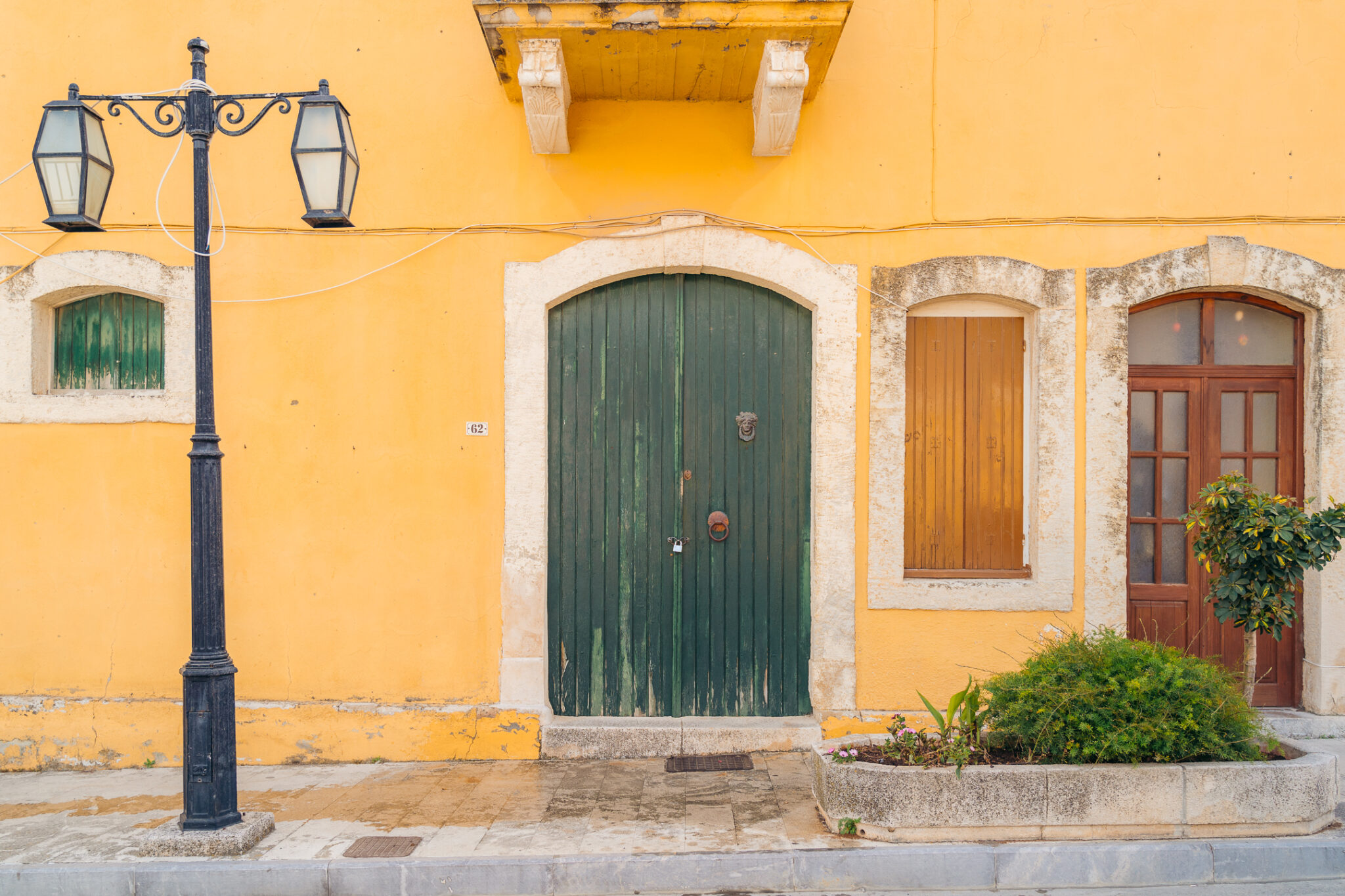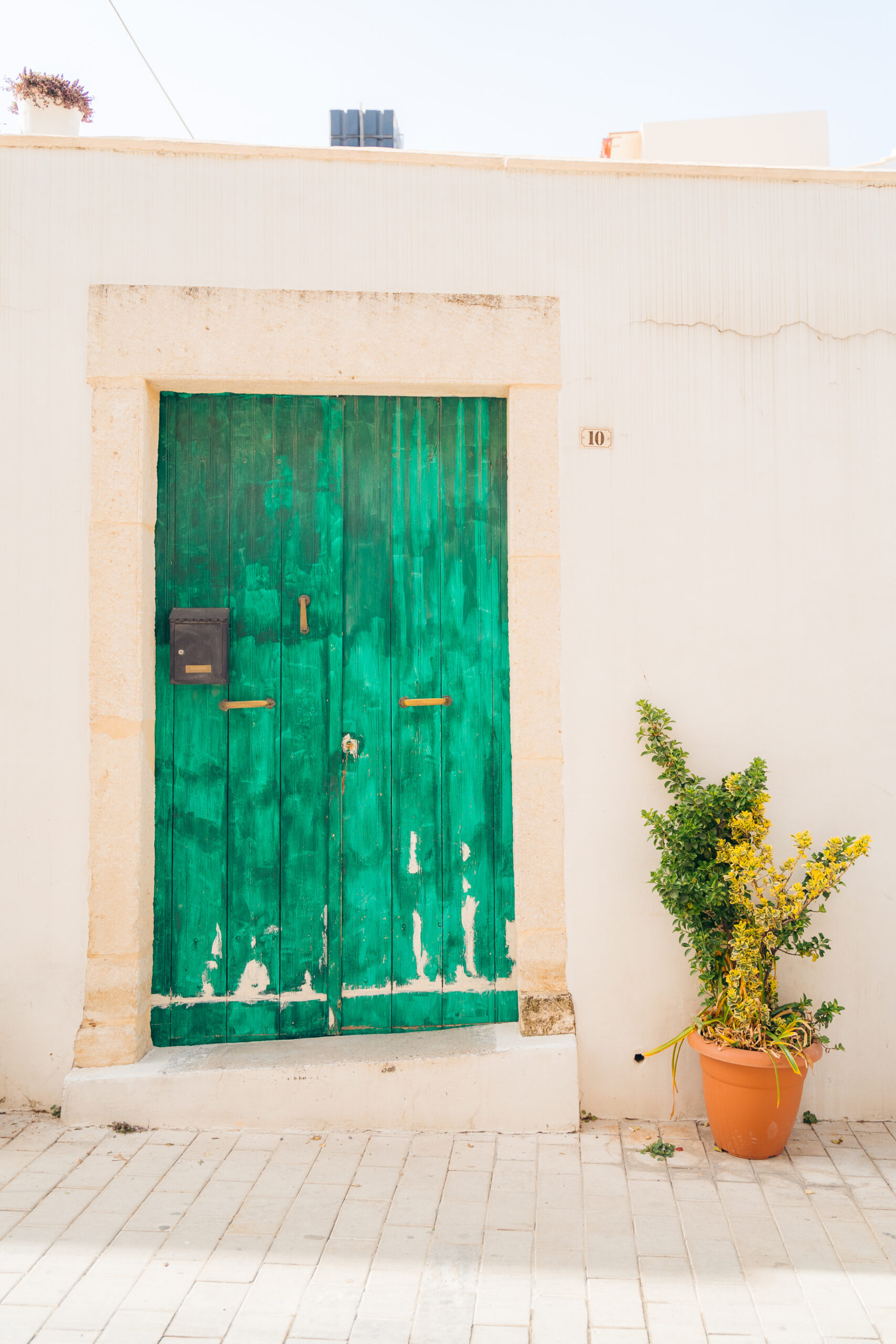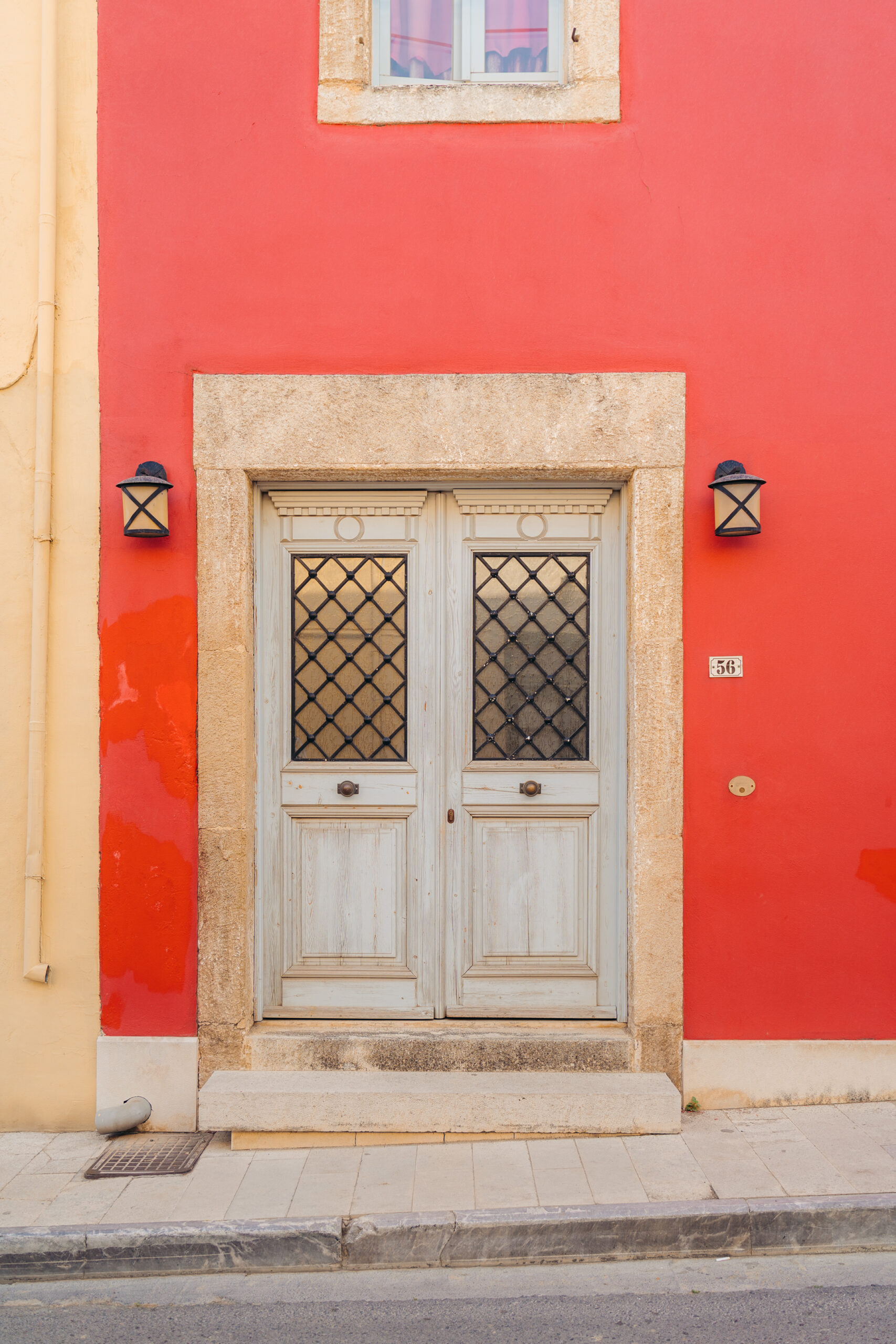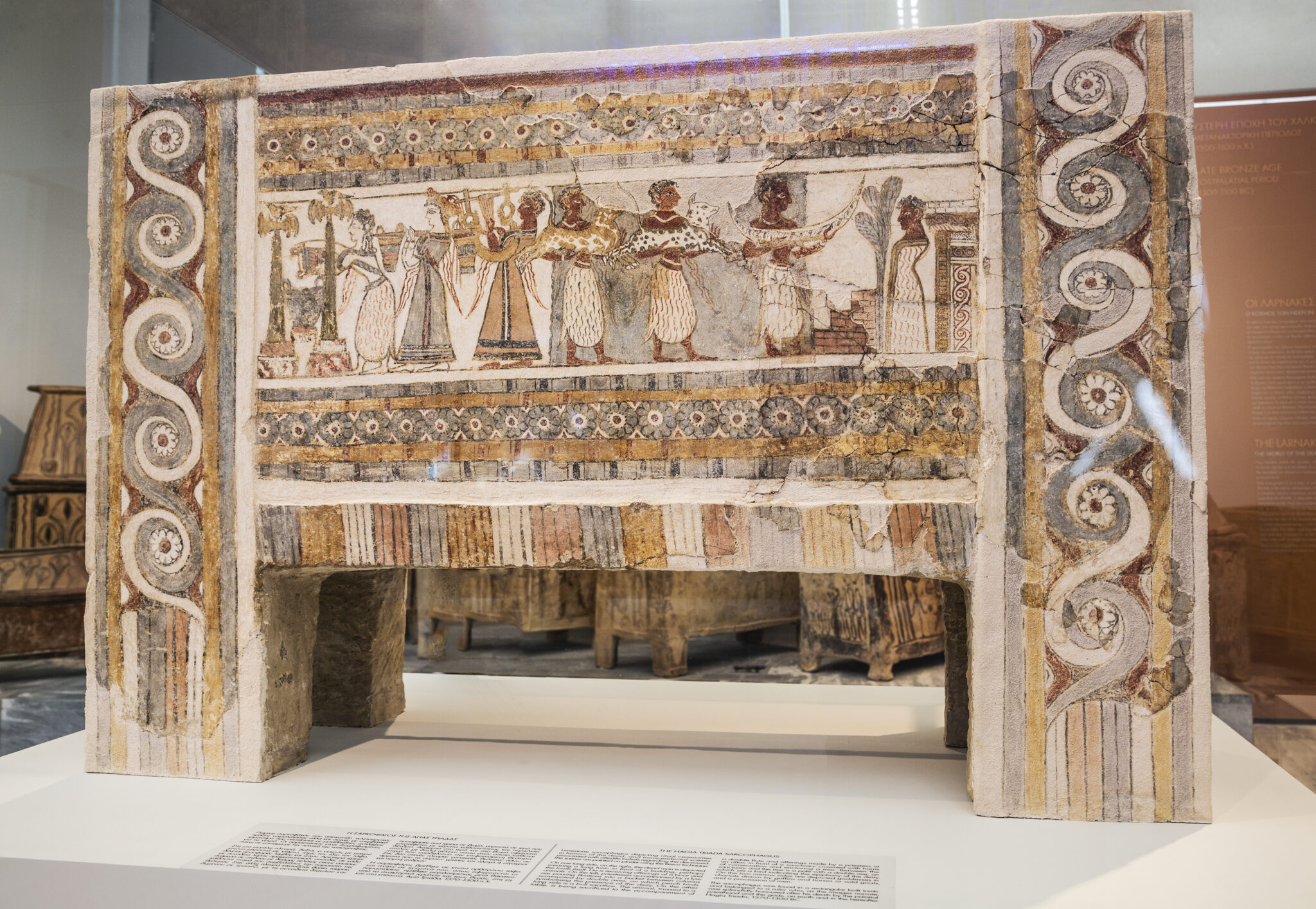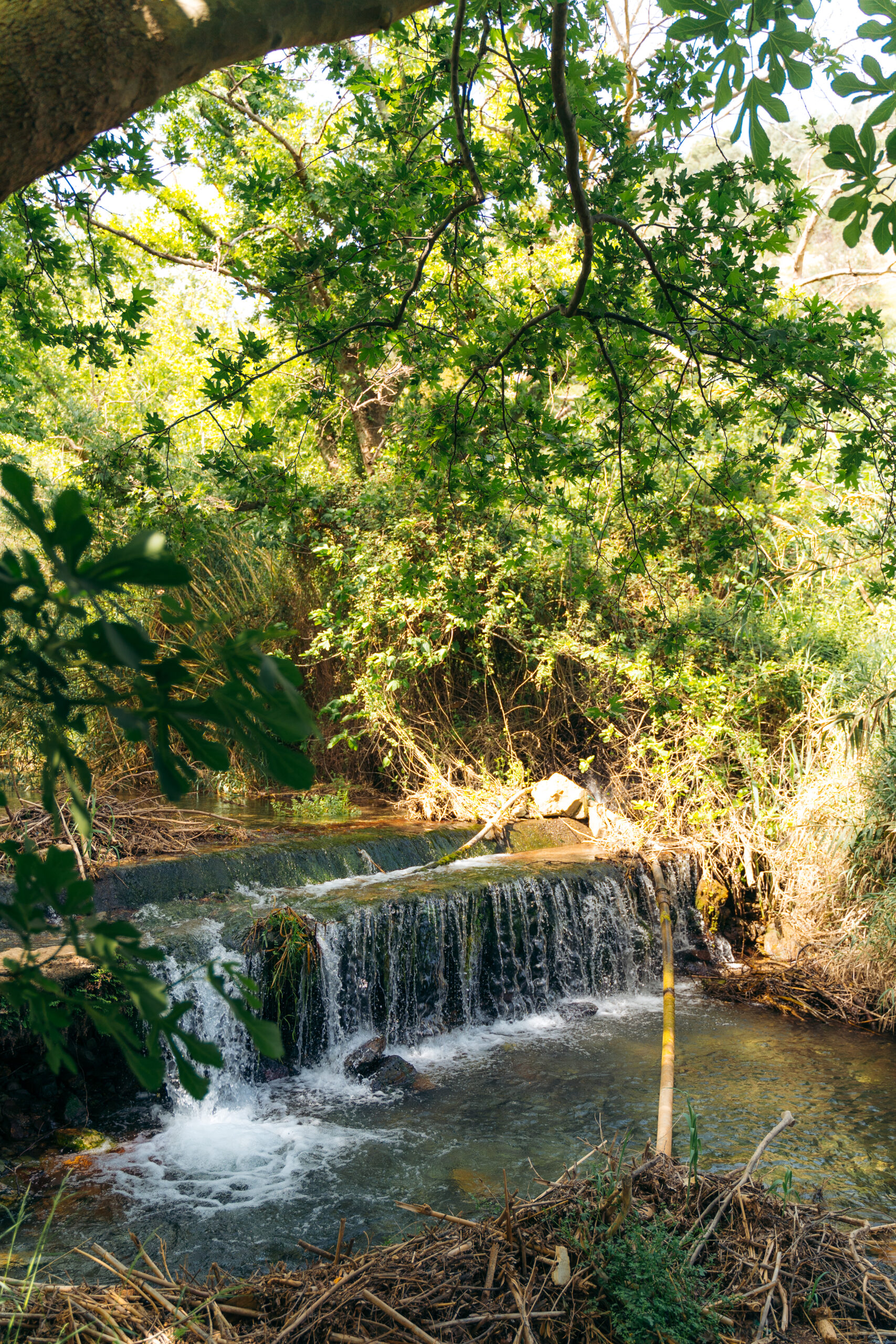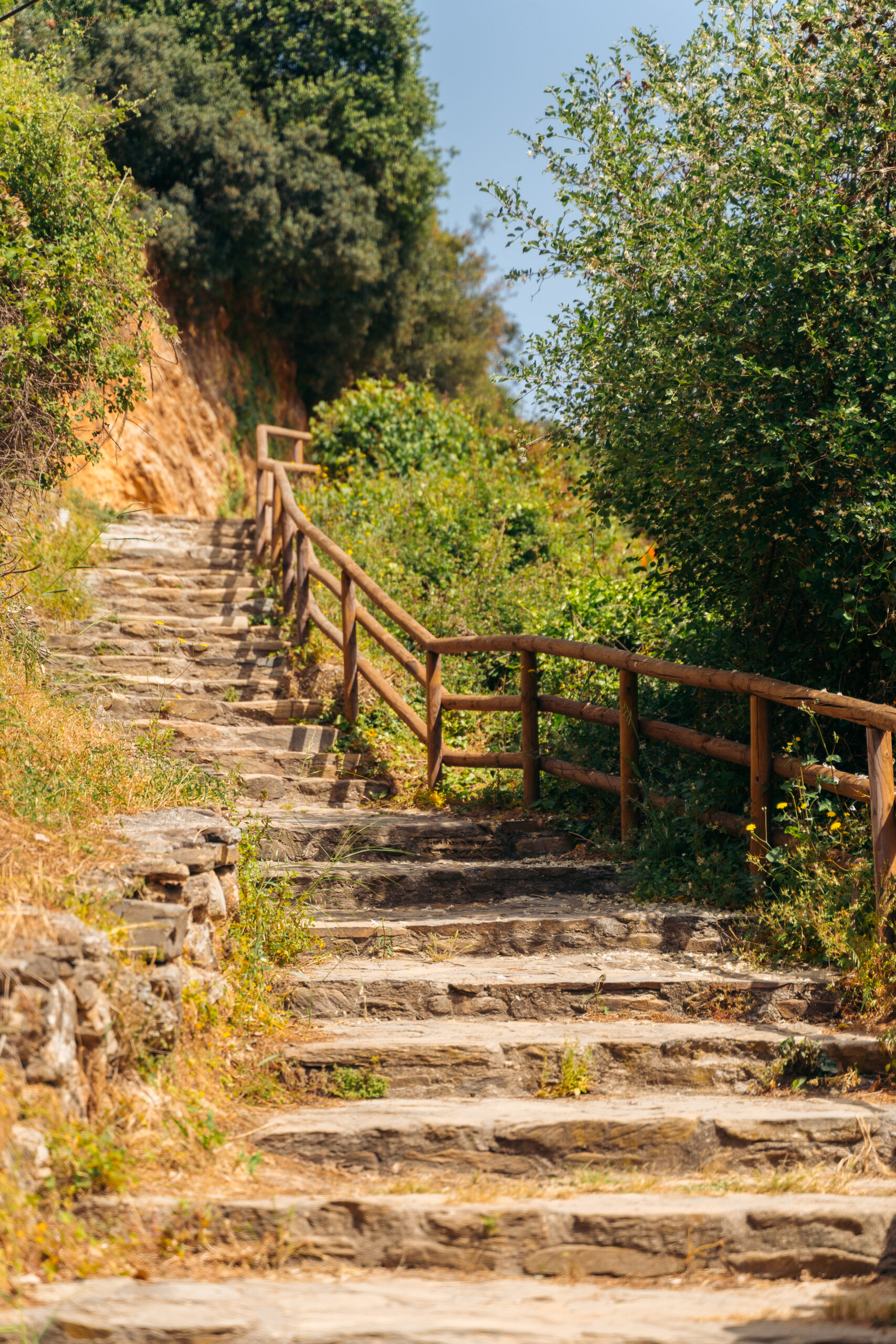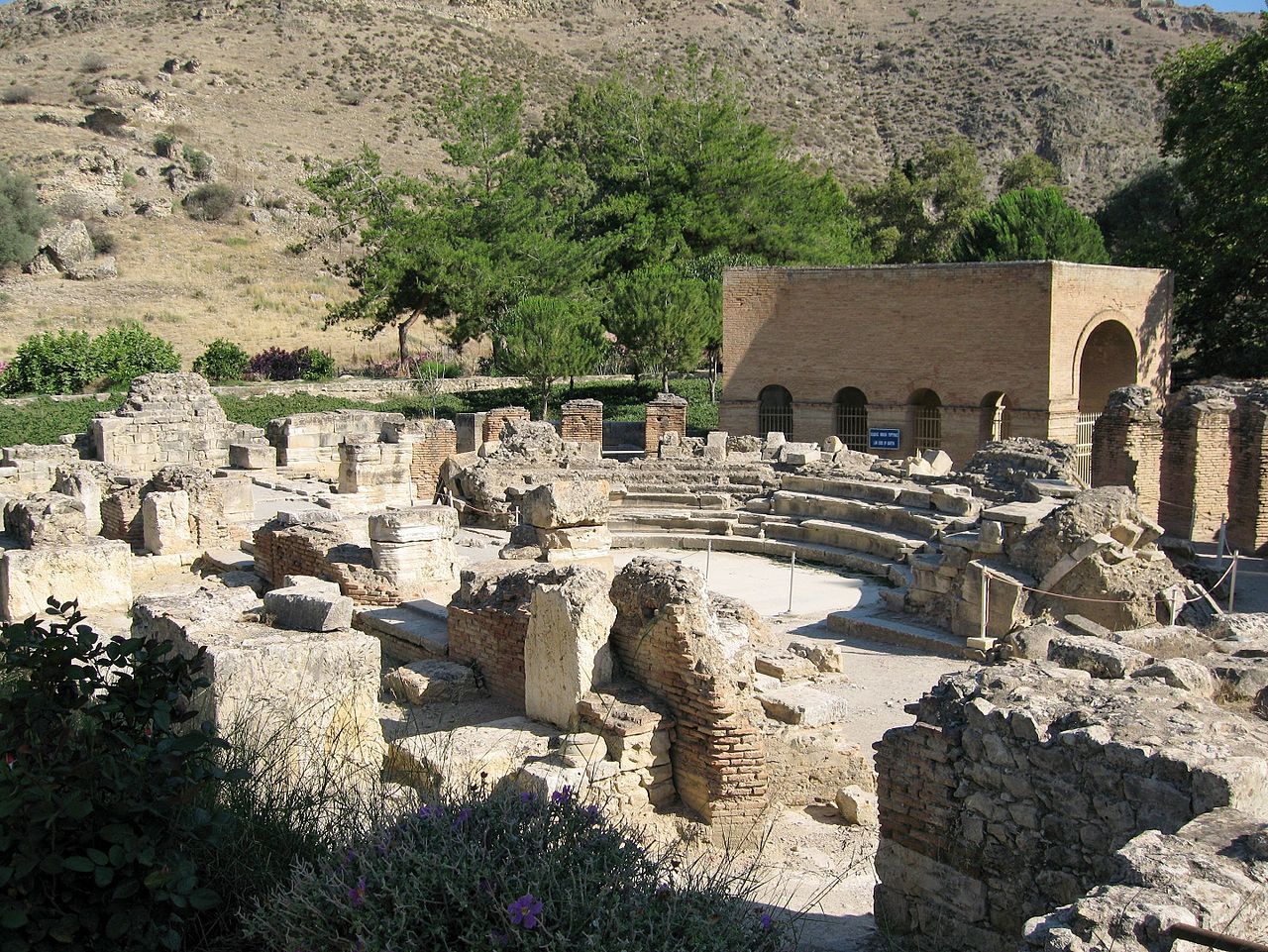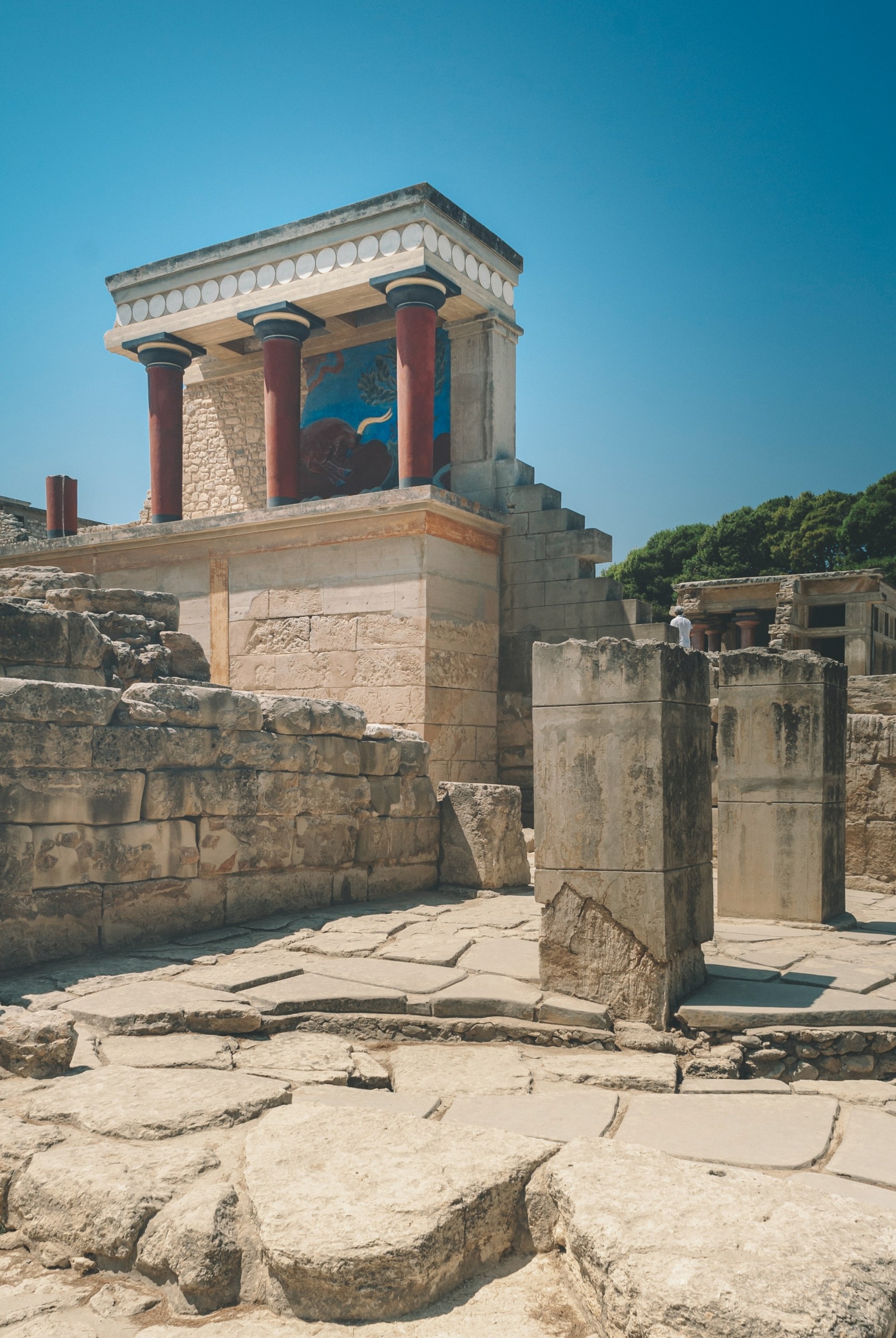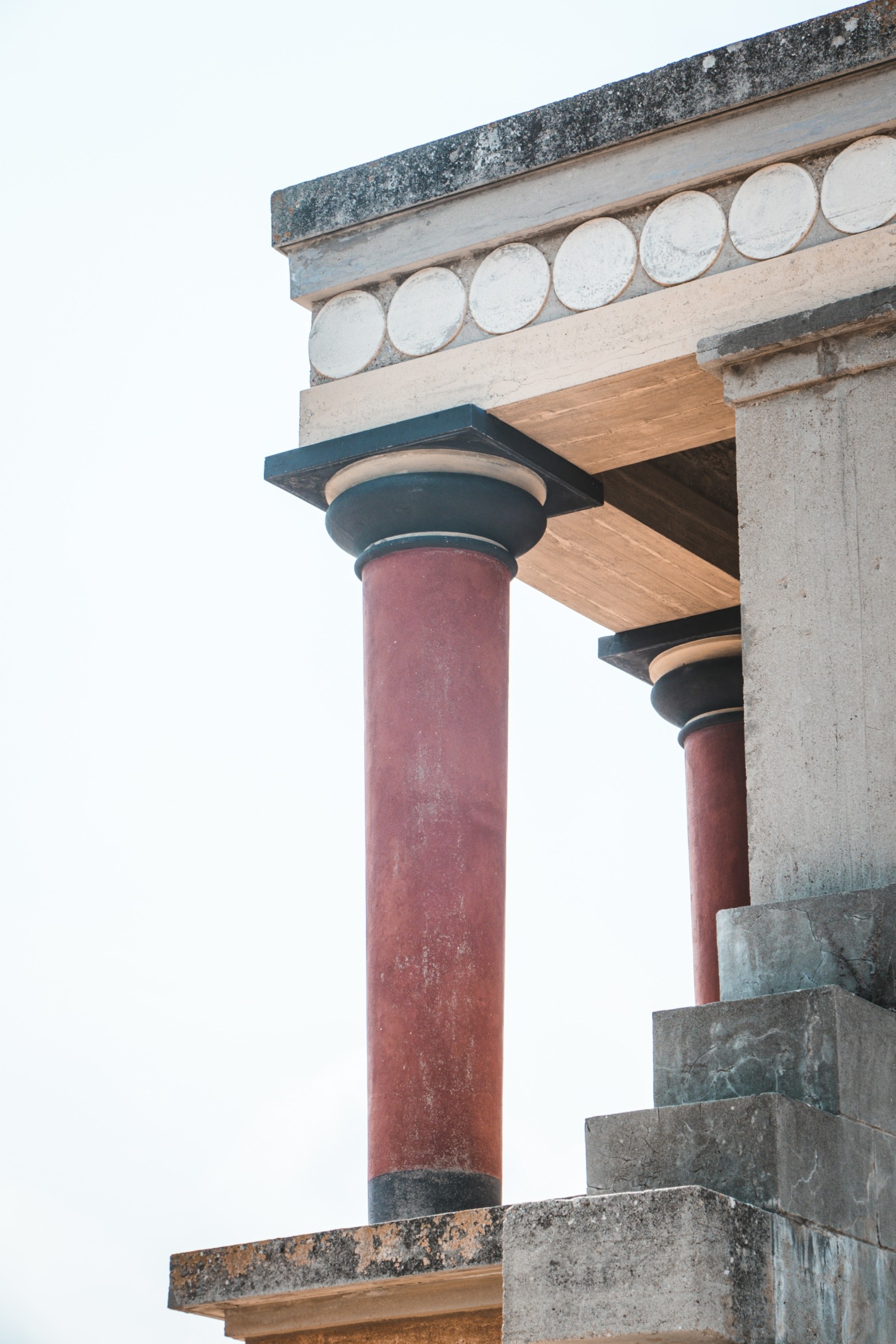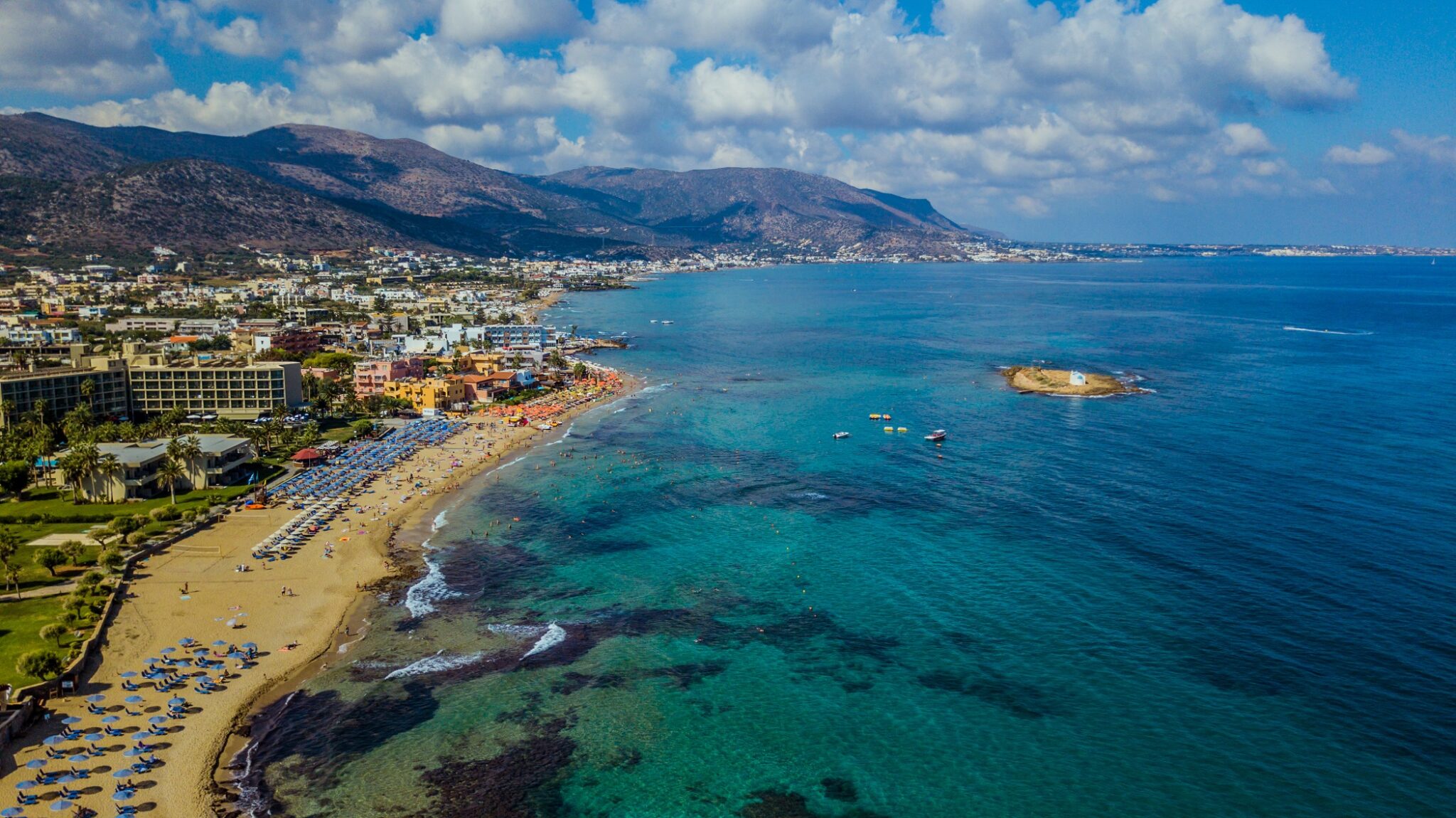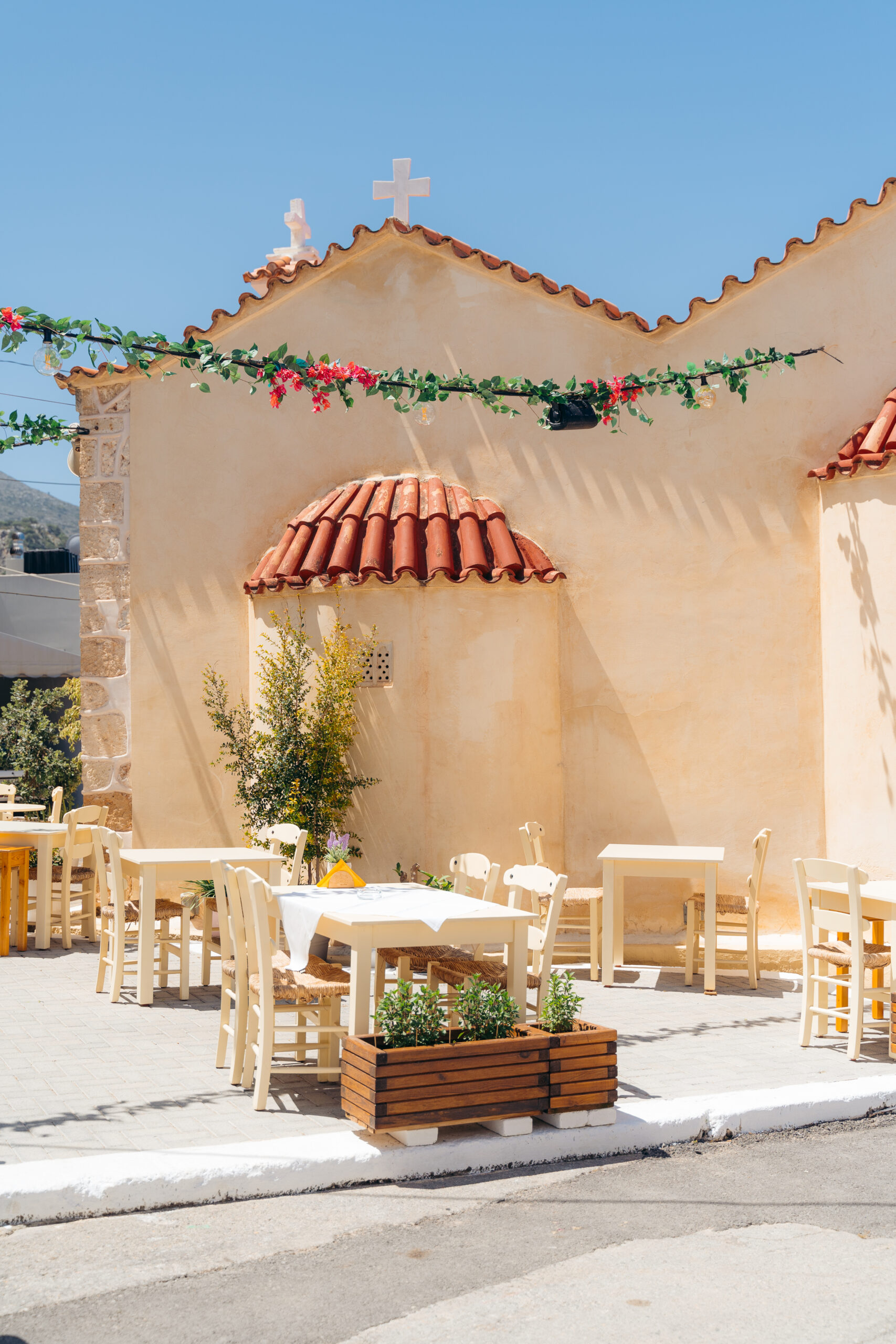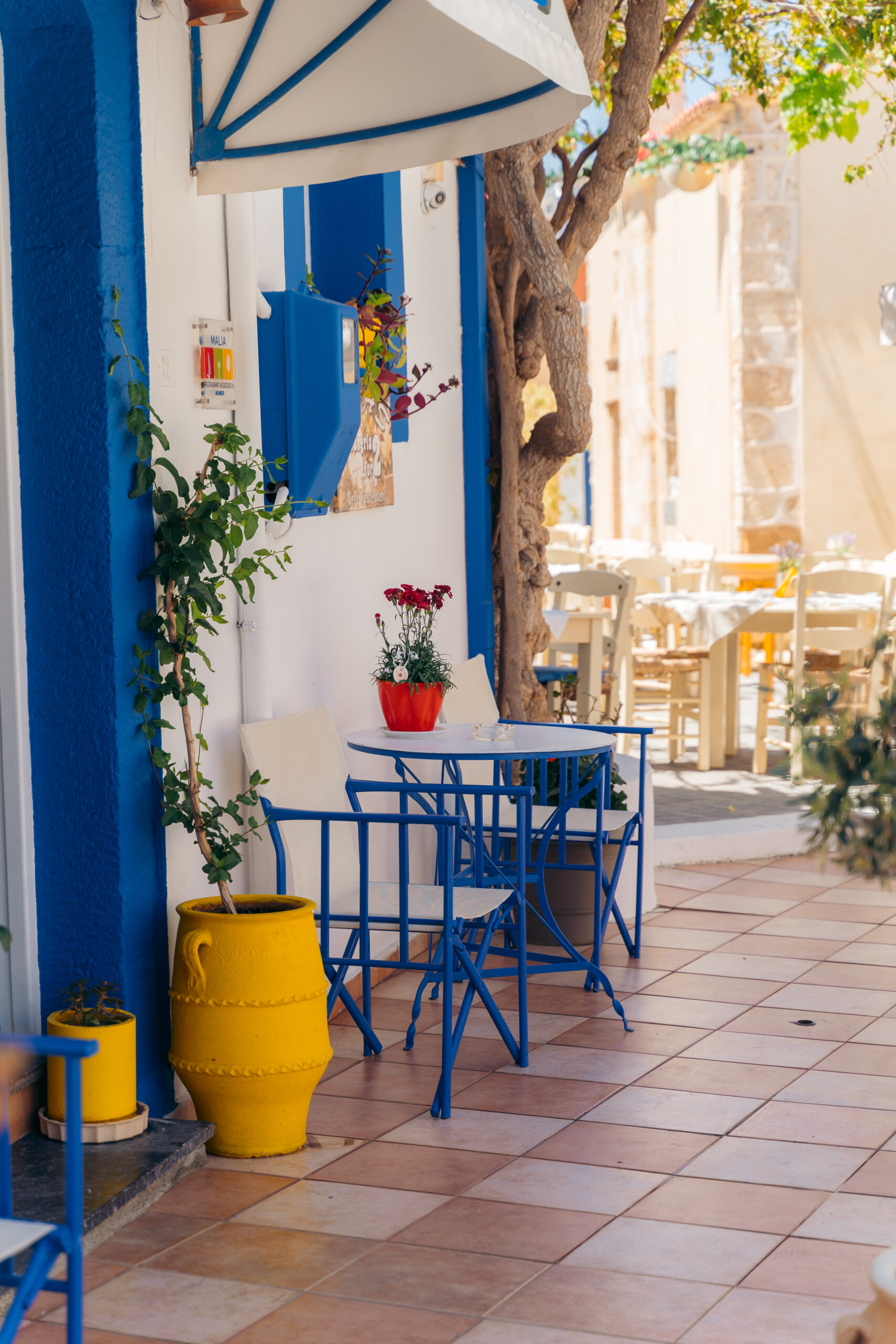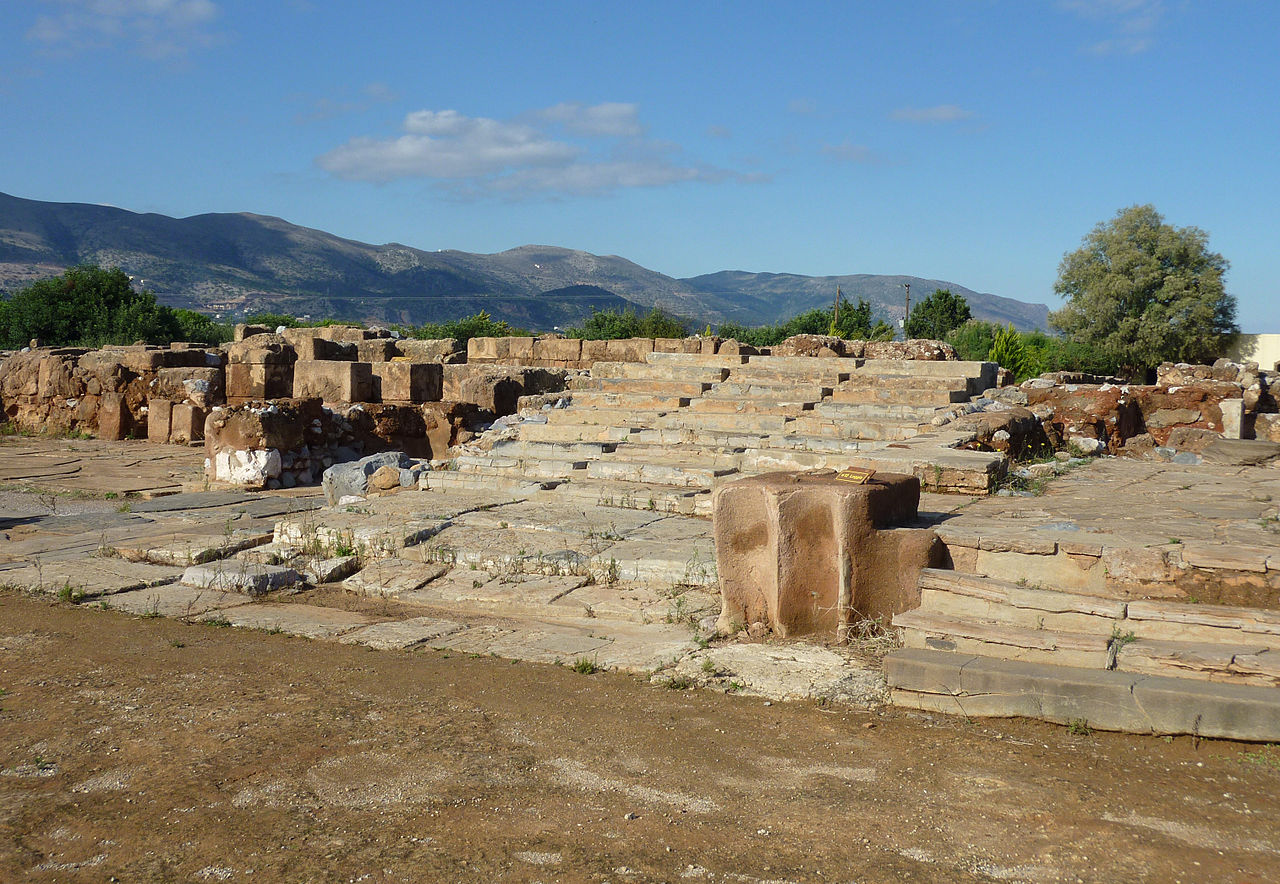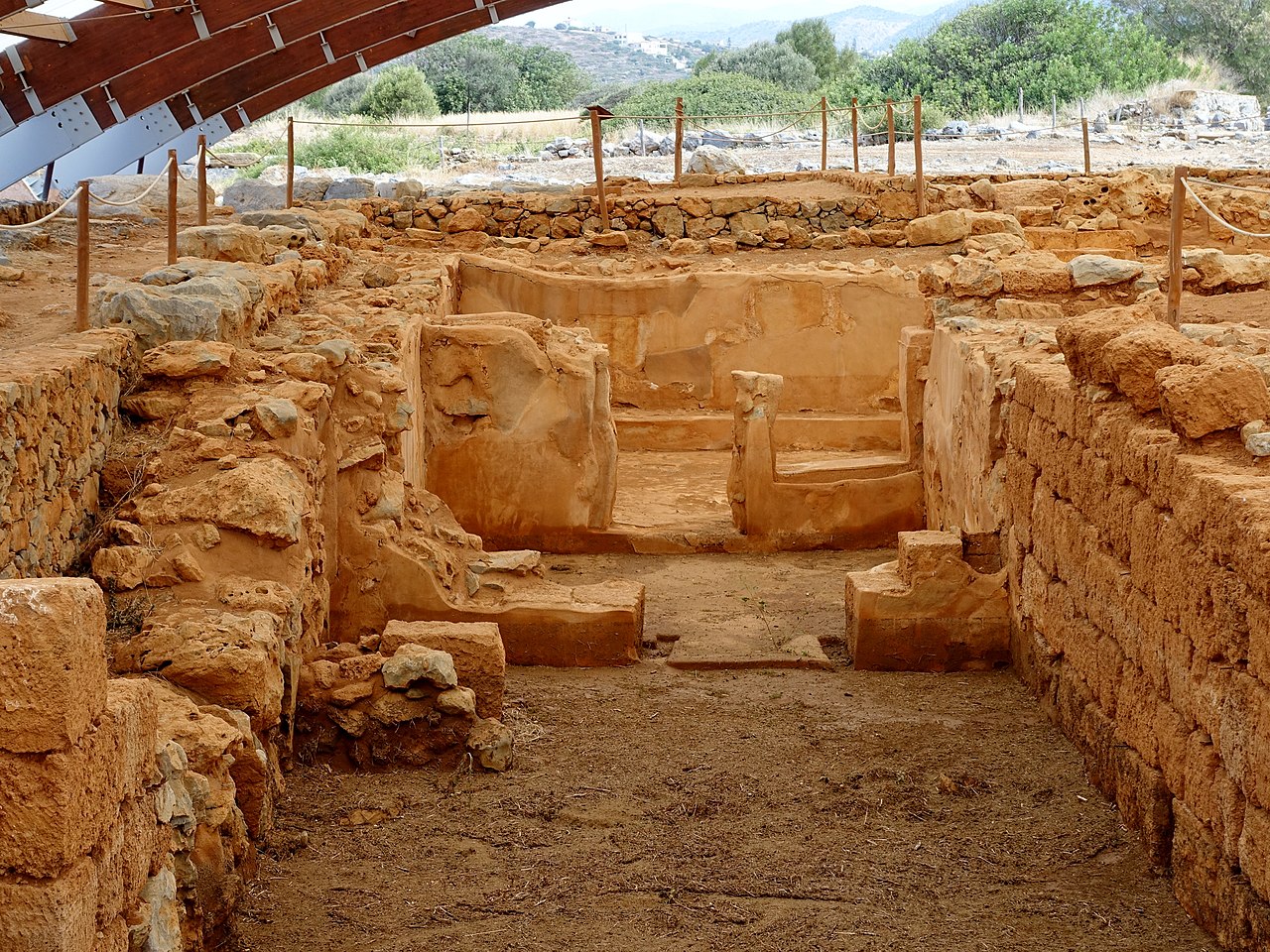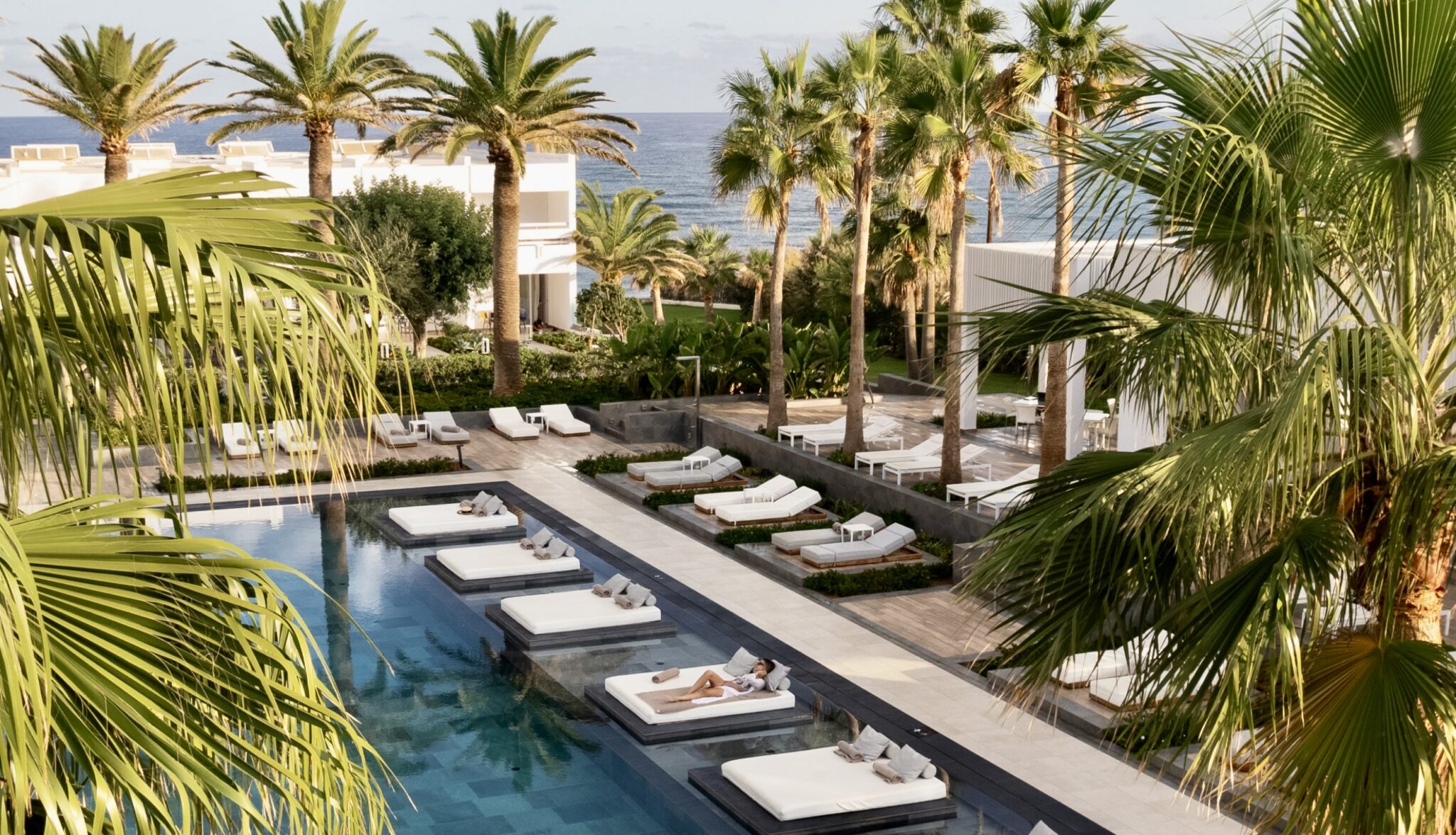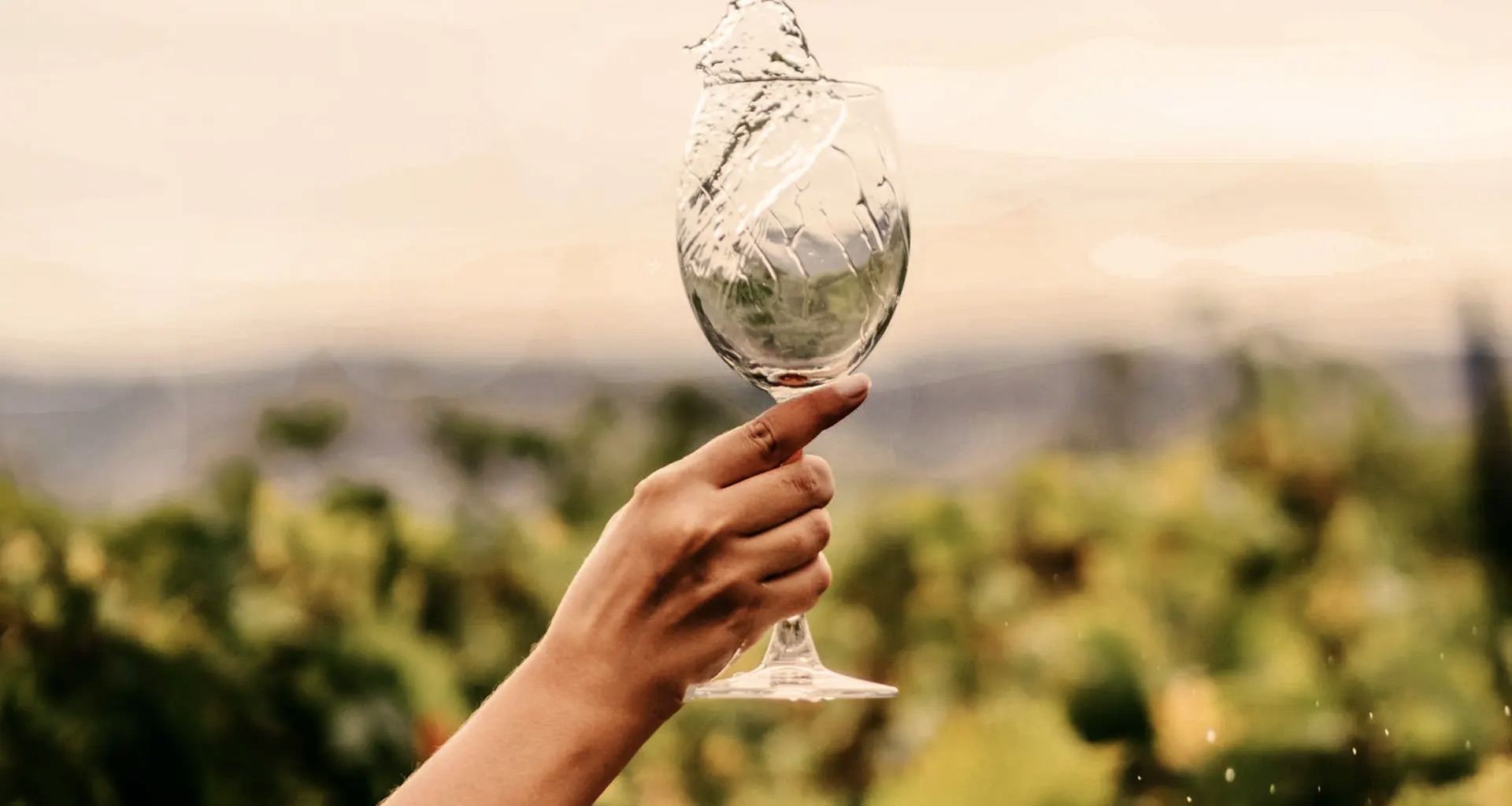The hub of central Crete, Heraklion is a busy but convenient base for the nearby Minoan Palace of Knossos. The wider environs of the prefecture deserves exploration to see Crete beyond its capital. The area directly around the city is less touristy than expected, mainly because there are few decent beaches on the adjacent coastlines. To the west, mountain cliffs drop into the sea all the way to Rethymno except for breaks in the seashore at Agia Pelagia and Bali.
Eastwards, coastal development straggles its way towards the mega-resorts of Hersonnissos and Malia. Inland there is some of the richest agricultural land on the island, a clutch of the better vineyards, and a cluster of wealthy farming villages. To the south are the sights of Gortyna, Phaistos and Ayia Triada which can all be visited in one day with maybe a swim at one of the south coast beaches thrown in.
Bear in mind that numerous must-visit attractions around Crete are scattered across this expansive island. Therefore, it’s crucial to rent a vehicle for easy access to these sites. Opt for a reliable car rental service to ensure a hassle-free and enjoyable experience.
Phaistos
In a magnificent site with views across to Mt Psiloritis to the north and the Lasithi plateau and mountains to the east, it is easy to see why the Minoans chose Phaistos to build a palace. All bare foundations and walls barely a metre high, the ruins are not as immediately arresting as those at Knossos or Malia but no less fascinating. On the ground and close at hand, the similarities between the places become obvious with huge rows of storage jars, great courtyards and monumental stairways and theatre areas. Oddly, though, Phaistos seems to have been less ornately decorated and there are no remains of the ornate wall frescoes so beloved from the other palaces. Palace of Phaistos (Tel.: 28920 42315, 8€).
Archanes
Inland from Heraklion, this lovely village at the foot of Mt. Giouktas sits in rolling hills surrounded by olive groves and vineyards. A wealthy farming town, there has been continuous habitation for over 5,000 years and there was a sizeable population in Minoan times. Much of the village has been sensitively restored with over 200 listed and protected traditional and neoclassical buildings. The central square is packed with tavernas and restaurants, while the backstreets are flower-filled and charming.
Outside of the town, at Karydaki in the Archanes gorge is the ruins of a Venetian aqueduct that ran from the foot of the mountain to the eight taps of the Lions fountain in the centre of Heraklion and supplied the city with water until 1927.
Agia Triada
Many of the finest works of art in the Archaeological Museum in Heraklion came from Agia Triada, 4km west of Phaistos. It is thought to have been some kind of summer palace for the nobility and rulers of Phaistos. Smaller than other palaces, the villa was lavishly appointed and decorated; two frescoes in Heraklion show a woman in a garden and a cat hunting a pheasant, while elaborate carved stone vessels and a sarcophagus for a prince explain the wealth of the owners. The villa was built around 1600 BC, and the views across the extensive Messara plain to the Libyan Sea may explain why it was situated where it was.
Fodele
Historically known for its oranges and lemons, Fodele is still green with water running through the village. The beachside strip that runs down to Agia Pelagia is overdeveloped with hotel after hotel jostling for space on the seashore, but the older inland village is a nice place to explore with traditional island architecture and colourful flower displays. Many tavernas cater to the weekend crowds who descend from Heraklion for long Sunday lunches in the shade of towering Platanos trees. The beach is wide and sandy with the western side well organised with beds and umbrellas, while the eastern side is wilder and usually less crowded.
The village is also home to the El Greco museum in an attractive building believed to be his birthplace and childhood home. No original works but backlit copies that show off the artist as a master of colour and ahead of his time. There is a small café, and nearby the 12th century Byzantine Church of the Annunciation of the Virgin Mary with fine frescoes dating from the golden era of this religious art form.
Gortyna
Second only to Knossos in importance, Gortyna flourished in the early centuries of Roman rule. The Gortyn Law Code, an inscription from the 5th century BC found here is the earliest known written Greek law. Prosperous and home to as many as 100,000 citizens it became the earliest Christian Cretan city and was the seat of Apostle Titus, the first bishop of Crete.
Climbing to the hilltop Acropolis for a view of the site reveals below an evergreen plane tree that according to legend served as the love bed of Zeus and Europa, and the resulting offspring the kings of Crete; Minos, Sarpedon, and Rhadamanthus. Gortyna (28920 31144, 6€)
Hersonissos
One of the most popular destinations in Crete, Hersonissos was once a small harbour dedicated to fishing. A victim of over-development, it is not without charm and the thousands of North Europeans who fill the resort beds every summer love its pleasant beaches, water parks, bars and nightclubs.
For those with a more cultural bent, the villages of Ano Hersonissos, Piskopiano, and Koutouloufari are pretty diversions, while treks in the Avdou valley and trips to the Lasithi plateau reward the adventurous.
Knossos
One of the primary reasons people visit Crete, Knossos is the thrilling centrepiece of the sublime civilisation of the Minoans. Bull-leapers, bare-breasted snake charmers, and mythic minotaurs are just some of the wonders that British archaeologist Sir Arthur Evans unearthed at Knossos at the close of the 19th century.
The Mighty Minoans flourished in Crete from around 2700 BC to 1450 BC and their cities were full of luxury and art while the rest of Europe was in comparative primitivity. Trading in Saffron, spices, and gold as far afield as Spain, the palace complex was not just the residence of the monarch but also the civic, religious and economic centre of the city state.
The archaeological site is big at around 20,000 square metres and has over 1,500 rooms so be prepared to walk a lot. There is little shade so bring sunscreen and water. There is ample parking around the site or easier still take the number 2 bus from Bus Station A at the port. The last stop is Knossos and the fare is 1.5€.
Malia
One of the most famous resorts in Greece for many of the wrong reasons, hordes of thousands of North Europeans descend upon the town in search of sand, sea and sex. The beach is huge on a 6km long bay starting from Stalis and the nightlife relentless with the early hours seeing drunken tourists staggering back to their hotels.
It wasn’t always like this as Malia was home to the third largest Minoan palace. According to mythology, Sarpendon ruled here until he was expelled to Lycia in Asia Minor by his brother Minos. Until 1880, the city remained hidden until the landowner chanced upon golden artefacts. First built around 1900 BC, the proximity to the sea was important in its development 3km to the east of the modern settlement of Malia.
The city name is still unknown although it was probably Tarmaros or Milatos, it minted its own coins, and it covered an area of over a square kilometre. Today the site is a ruin with no standing buildings. Most areas are open air with only some under shelter so bring sunscreen and water as there are no refreshment facilities. Palace of Malia (Tel.: 28970 31597, closed Tuesday, 6€)
Matala
A very popular resort has grown around Matala, once the port of Phaistos, and later for Gortyna. Made famous in the 1960’s as a stopover on the hippy trail, Joni Mitchell immortalized it in song. At the end of a valley, in an enclosed bay looking out to the islands of Paximadia, Matala is still in touch with its flower-power vibe but the town is developing rapidly.
The most famous sight of the area are the graves from the Roman and Christian era cut into the soft limestone in the northwest walls of the bay. Fitted out with rooms, windows, stairs and beds, the hippies made their homes here, only to be expelled during the years of the Greek dictatorship. Today the caves are open to visitors but overnight stays are forbidden.
Read also:
A Whistle Stop visit to Heraklion, the Capital of Crete
Τhe famous delicacy of Heraklion, Crete
Heraklion: The Venetian heritage, the Minoan palaces, and a mini guide to have the best time



